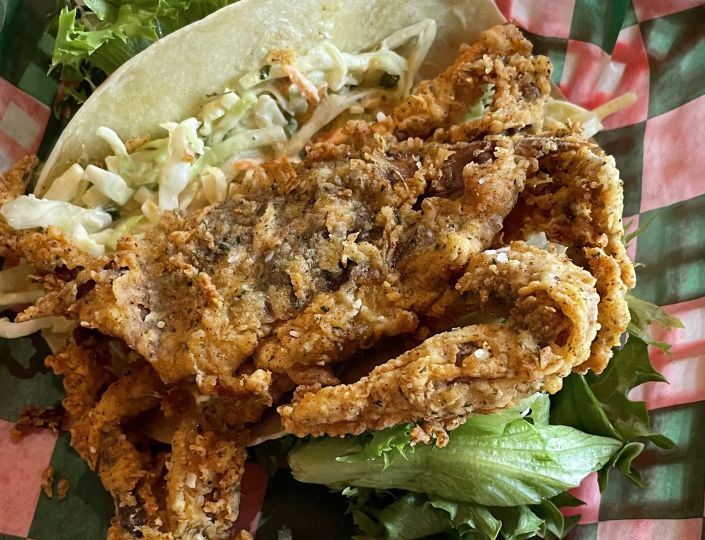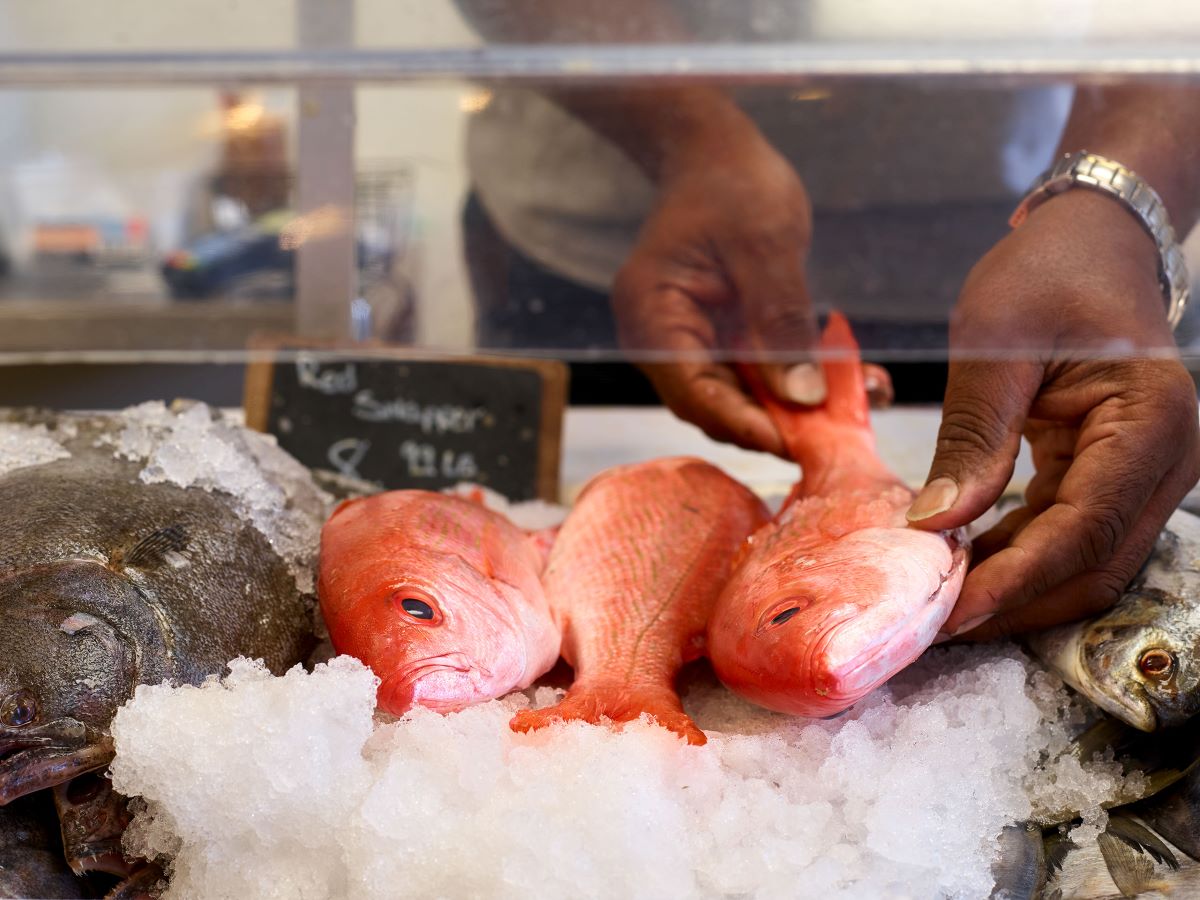The tasty fish no one is talking about. What you need to know
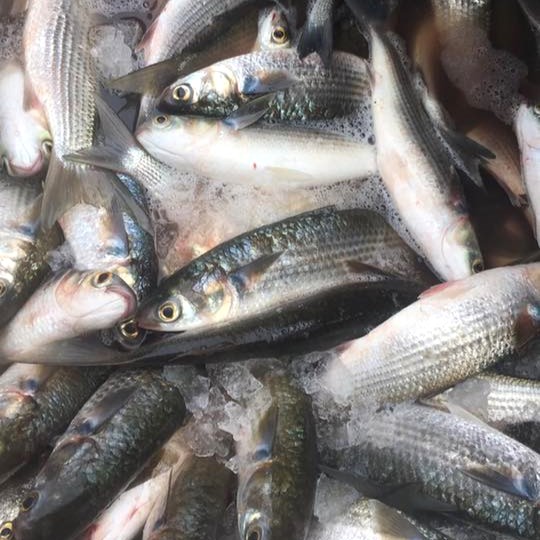
One of North Carolina’s most important fish is one you’ve probably never seen. Once you’ve tasted it and learned its history, you’ll want to eat it again and again.
Jumping mullets, also known as striped mullets, don’t show up on many restaurant menus or seafood market counters. That’s too bad. They’re some of the best fish for grilling. Plus, their history is fascinating. Commercial fishing for jumping mullets dates back to before colonial times.

A 1701 drawing by British explorer John Lawson
depicts indigenous peoples grilling mullets.
Watching crews work beach nets as their ancestors did more than 150 years ago has become a rare sight along our state’s shore, but a commercial fishing team in Carteret County’s tiny village of Salter Path recently brought the tradition home.
Fall is the time for catching jumping mullets, and yes, they jump, and jump high. Carteret County is one of the last remaining places where fishermen harvest jumping mullets the old-fashioned way. The Salter Path crew in fall 2023 landed one of the largest catches of jumping mullets in a generation — almost 80,000 pounds — using a historic gear.
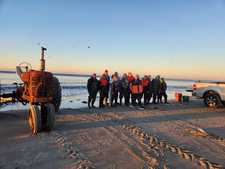
The Salter Path crew still using historic gear
to harvest jumping mullet. Photo: Amy Nelson
They set a J-shaped stop net perpendicular to the ocean shoreline to help “stop” mullets during their fall migration to offshore waters.
Once fishermen saw mullets gathering at the stop net, they deployed a second net known as a strike net. Crews attached one end of the strike net to a tractor. The rest of the net was pulled out by a traditional fishing boat called a “beach dory.” The dory crew stretched out the strike net in circle around the fish corralled by the stop net. Then, the dory headed back to shore, keeping time with the tractor to pull in the strike net.
Commercial fishing crews have been harvesting jumping mullets this way since at least the mid-1800s. Before tractors, crews used horses to help pull in the strike net.
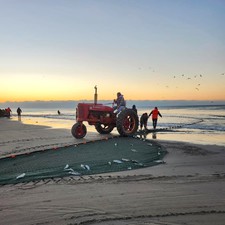
The Salter Path crew used an old tractor to
help pull in the strike net. Photo: Amy Nelson
So much history surrounds the state’s jumping mullet fishery that it has been featured in the 2019 PBS film “The Life of a Fisherman.” Distinguished historians like Duke University ’s David Cecelski and N.C. Maritime Museum curator David Bennett have written remarkable descriptions of the fishery.
On the day of the great 80,000-pound catch, crews spent almost the entire day hauling, loading and transporting the catch to market. Processing and packing the fresh fish required an immediate, massive and worthwhile effort.
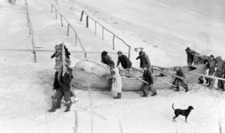
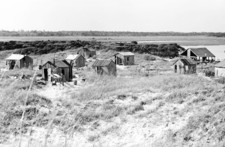
In 1938, photographer Charles Farrell captured
a mullet camp on Brown's Island
now part of Camp Lejeune, in Onslow County.
Jumping mullets are valued for their roe, especially among Asian consumers. North Carolinians prize the fish’s roe and meat, too. They have a long and storied history of eating jumping mullet, dating back to at least 1663, the N.C. Maritime Museum’s Bennett reports.
Throughout the state’s history, many coastal residents depended on mullet for subsistence, often preserving the fish in salt, a process known as corning. In the 1800s and 1900s, mullet fishing villages dotted shores from the Outer Banks south to Onslow County, but mostly around Core and Bogue banks. Charming Beaufort, N.C., was originally known as Fishtowne due to its prolific fisheries, of which mullet was the kingpin.
So many salted mullets were transported out of Beaufort and Morehead City in the 1800’s that the railroad there was called the “Mullet Line.”
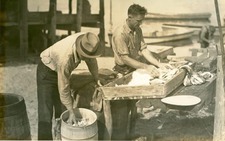
Mullet camp workers salting fish on Brown's
Island in 1938. Photo: Charles Farrell
Carteret County residents were renown (and still are) for loving brined or dried mullet roe and barbecued or charcoal mullet.
You’re missing out if you’ve never tried a charcoal mullet recipe. Ask your fish monger for filets with the skin and scales intact. Cook the fish skin side down over hot coals, brushing the meat with barbecue sauce if you’d like. The nutty, buttery meat will cook in the fish’s fats, producing a deeply savory flavor.
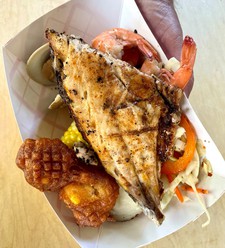
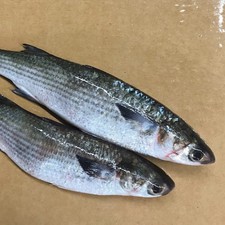
Charcoal Mullet and jumping mullet,
also known as striped mullet.
Photos: Liz Biro and Locals Seafood.
Also look for innovative products like local smoked mullet from Ophelia Inlet Products in Atlantic, N.C., and Seaview Crab Company in Wilmington, N.C. Smoked mullet is a delicious alternative to smoked salmon, which is not local to North Carolina waters.
If you live in the Triangle or mountain areas of the state, check with Locals Seafood. You can also find jumping mullets in season on the menu at James Beard Award winning chef Ricky Moore’s Saltbox Seafood Joint in Durham.
No matter where you live in North Carolina, ask your seafood purveyor to stock jumping mullets caught by our state’s commercial fishing families. You are sure to enjoy this special North Carolina fish, rich in history, tradition and flavor.
Story by N.C. Catch board vice chair Jess Hawkins and N.C. Catch staff. Top photo: Endurance Seafood.



